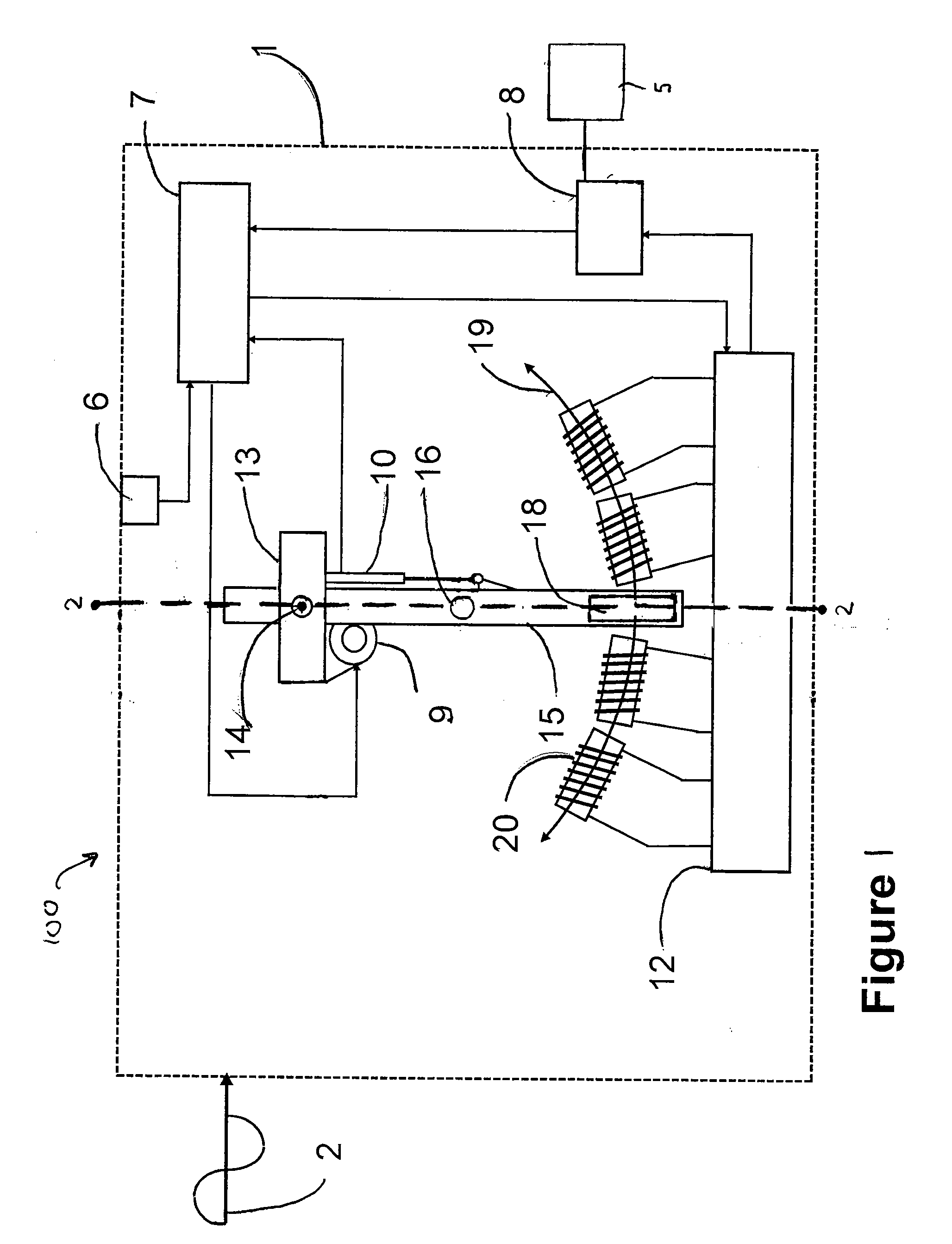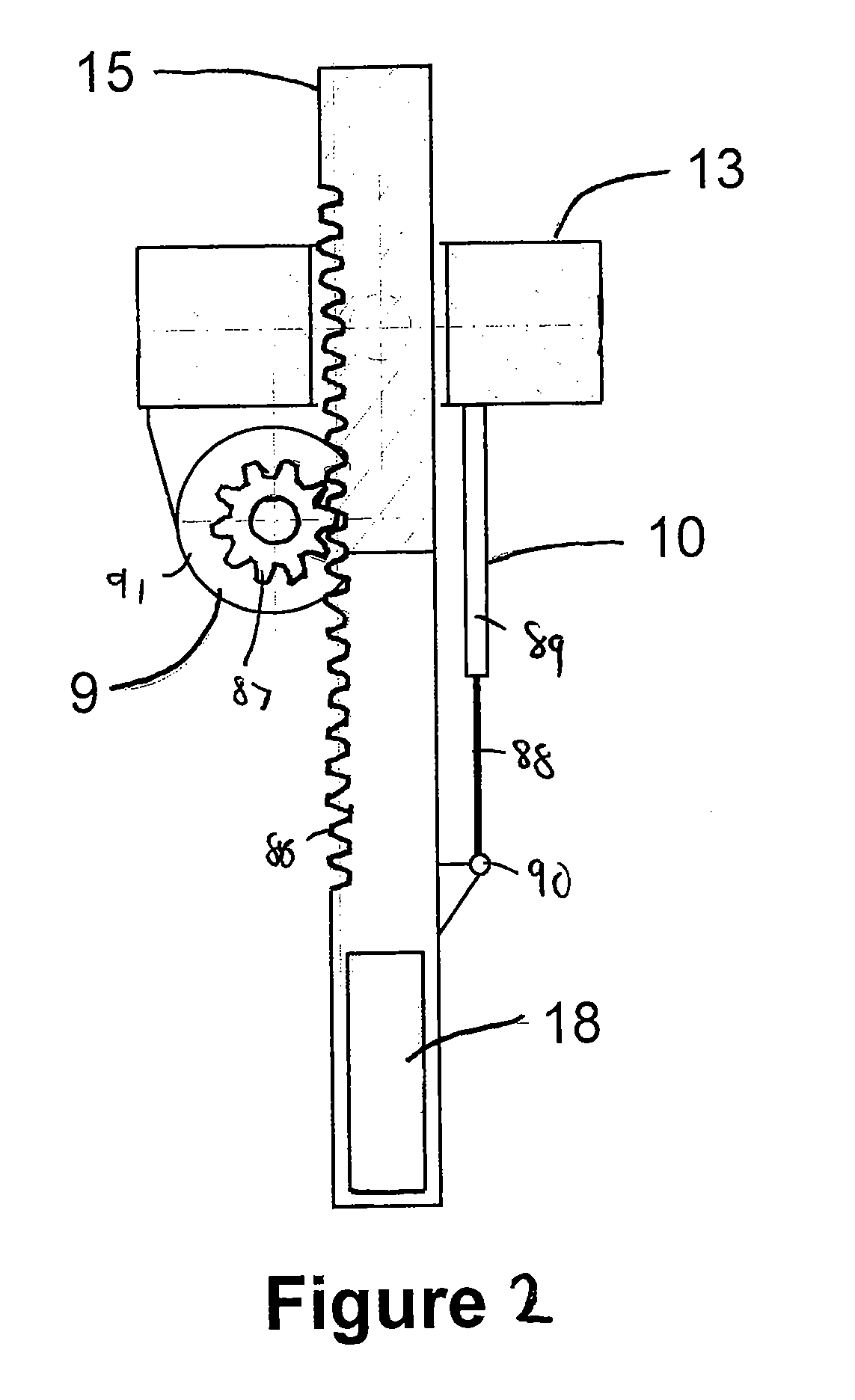Wave energy converter
a converter and wave energy technology, applied in the direction of mechanical equipment, machines/engines, electric generator control, etc., can solve the problems of complex wec to respond to transient waves, the apparatus of the wec must change a mass, and many wecs are not equipped to respond to wave changes
- Summary
- Abstract
- Description
- Claims
- Application Information
AI Technical Summary
Problems solved by technology
Method used
Image
Examples
fifth embodiment
[0071]Referring to FIG. 8, there is shown an isolated side-elevational view of rotor and stator of the present invention. The pendulum 71 is moved up and down by the pendulum adjusting means 68. The pendulum 71 is held within the mounting assembly 66. The pendulum adjusting means 68 adjusts the pendulum 71 up and down within the mounting assembly 66. Bearing 72 connects the mounting assembly 66 to the shell 65. The pendulum 71 imparts oscillatory motion upon the rod 70. The rod 70 oscillates a rotor in the electrical energy converter 67 relative to the stator located in the electrical energy converter 67. A rotation sensor 69 is located adjacent the bearings 72. The amplitude of the motion of the pendulum 71 is controlled by a caliper 27 and brake disk 28 arrangement. Free movement of the pendulum 71 is allowed by the calipers 27 when the calipers 27 do not touch the brake disk 28. If the amplitude of the pendulum 71 needs to be decreased, the calipers 27 press against the brake dis...
sixth embodiment
[0074]Referring to FIG. 11, there is shown an isolated side-elevational view of the rotor and stator of the present invention. The pendulum 75 has a split 99 formed therein. Magnets 81 are placed on the walls of the split 99. Magnets 81 pass around the magnets of the variable inductance means 82. The variable inductance means 82 is connected to the shell 76. The pendulum 76 turns rod 80 which turns the rotor relative to the stator in the electrical energy converter 84. A caliber can dampen the motion of the brake disk 85 so as to control the motion of the pendulum 75. The pendulum adjusting means 77 adjusts the height of the pendulum 75. The pendulum adjusting means 77 is mounted to the mounting assembly 79. The bearings 83 are adjacent the mounting assembly 79. Rotation sensor 78 is placed adjacent the bearing 83. The bearings 83 are mounted to the shell 76. The rod 80 oscillates with the pendulum 75 within the bearings 83.
PUM
 Login to View More
Login to View More Abstract
Description
Claims
Application Information
 Login to View More
Login to View More - R&D
- Intellectual Property
- Life Sciences
- Materials
- Tech Scout
- Unparalleled Data Quality
- Higher Quality Content
- 60% Fewer Hallucinations
Browse by: Latest US Patents, China's latest patents, Technical Efficacy Thesaurus, Application Domain, Technology Topic, Popular Technical Reports.
© 2025 PatSnap. All rights reserved.Legal|Privacy policy|Modern Slavery Act Transparency Statement|Sitemap|About US| Contact US: help@patsnap.com



